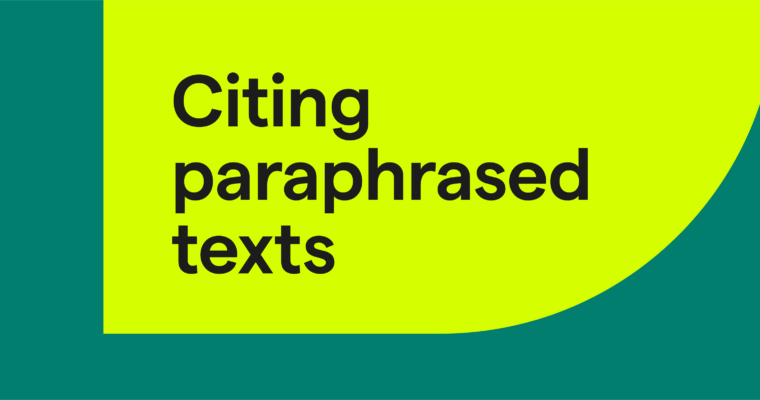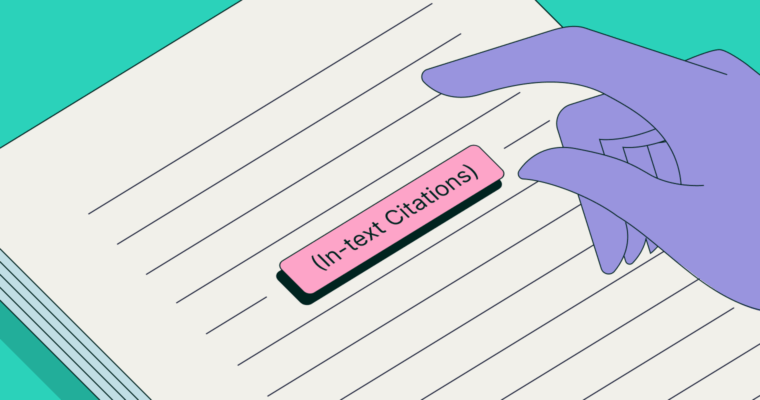
You spent the past six hours grinding out your latest paper, but finally, it’s finished. It’s late, you’re exhausted, and all you want to do is click “Submit Assignment” and then get some sleep.
Not so fast. If your paper doesn’t have a properly formatted bibliography, it’s not finished.
A bibliography is a list of all the sources you consulted while writing your paper. Every book, article, and even video you used to gather information for your paper needs to be cited in your bibliography so your instructor (and any others reading your work) can trace the facts, statistics, and insights back to their original sources.
What is the purpose of a bibliography?
A bibliography is the list of sources a work’s author used to create the work. It accompanies just about every type of academic writing, like essays, research papers, and reports. You might also find a brief, less formal bibliography at the end of a journalistic piece, presentation, or video when the author feels it’s necessary to cite their sources. In nearly all academic instances, a bibliography is required. Not including a bibliography (or including an incomplete, incorrect, or falsified bibliography) can be considered an act of plagiarism, which can lead to a failing grade, being dropped from your course or program, and even being suspended or expelled from your school.
A bibliography accomplishes a few things. These include:
- Showing your instructor that you conducted the necessary research for your assignment
- Crediting your sources’ authors for the research they conducted
- Making it easy for anybody who reads your work to find the sources you used and conduct their own research on the same or a similar topic
Additionally, future historians consulting your writing can use your bibliography to identify primary and secondary sources in your research field. Documenting the course information from its original source through later academic works can help researchers understand how that information has been cited and interpreted over time. It can also help them review the information in the face of competing—and possibly contradictory or revisionary—data.
In nearly all cases, a bibliography is found at the end of a book or paper.
What are the different kinds of bibliographies?
Different types of academic works call for different types of bibliographies. For example, your computer science professor might require you to submit an annotated bibliography along with your paper because this type of bibliography explains the why behind each source you chose to consult.
Analytical bibliography
An analytical bibliography documents a work’s journey from manuscript to published book or article. This type of bibliography includes the physical characteristics of each cited source, like each work’s number of pages, type of binding used, and illustrations.
Annotated bibliography
An annotated bibliography is a bibliography that includes annotations, which are short notes explaining why the author chose each of the sources. Generally a few sentences long, these notes might summarize or reflect on the source.
An annotated bibliography is not the same as a literature review. While a literature review discusses how you conducted your research and how your work fits into the overall body of established research in your field, an annotated bibliography simply explains how each source you used is relevant to your work.
Enumerative bibliography
An enumerative bibliography is the most basic type of bibliography. It’s a list of sources used to conduct research, often ordered according to specific characteristics, like alphabetically by authors’ last names or grouped according to topic or language.
Specific types of enumerative bibliographies used for research works include:
National bibliography
A national bibliography groups sources published in a specific region or nation. In many cases, these bibliographies also group works according to the time period during which they were published.
Personal bibliography
A personal bibliography lists multiple works by the same individual author or group of authors. Often, personal bibliographies include works that would be difficult to find elsewhere, like unpublished works.
Corporate bibliography
In a corporate bibliography, the sources are grouped according to their relation to a specific organization. The sources can be about an organization, published by that organization, or owned by that organization.
Subject bibliography
Subject bibliographies group works according to the subjects they cover. Generally, these bibliographies list primary and secondary sources, whereas other types of enumerative bibliographies, like personal bibliographies, might not.
Other types of bibliographies
In some cases, it makes sense to use a bibliography format other than those listed here. These include:
Single-author bibliography
This type of bibliography lists works by a single author. With certain assignments, like an essay comparing two of an author’s books, your bibliography is a single-author bibliography by default. In this case, you can choose how to order the sources, such as by publication date or alphabetically by title.
Selected bibliography
A selected bibliography is a bibliography that only lists some of the sources you consulted. Usually, these are the most important sources for your work. You might write a selected bibliography if you consulted a variety of minor sources that you didn’t end up citing directly in your work. A selected bibliography may also be an annotated bibliography.
How is a bibliography structured?
Although each style guide has its own formatting rules for bibliographies, all bibliographies follow a similar structure. Key points to keep in mind when you’re structuring a bibliography include:
- Every bibliography page has a header. Format this header according to the style guide you’re using.
- Every bibliography has a title, such as “Works Cited,” “References,” or simply “Bibliography.”
- Bibliographies are lists. List your sources alphabetically according to their authors’ last names or their titles—whichever is applicable according to the style guide you’re using. The exception is a single-author bibliography or one that groups sources according to a shared characteristic.
- Bibliographies are double-spaced.
- Bibliographies should be in legible fonts, typically the same font as the papers they accompany.
As noted above, different kinds of assignments require different kinds of bibliographies. For example, you might write an analytical bibliography for your art history paper because this type of bibliography gives you space to discuss how the construction methods used for your sources inform their content and vice-versa. If you aren’t sure which kind of bibliography to write, ask your instructor.
How do you write a bibliography?
The term “bibliography” is a catch-all for any list of sources cited at the end of an academic work. Certain style guides use different terminology to refer to bibliographies. For example, MLA format refers to a paper’s bibliography as its Works Cited page. APA refers to it as the References page. No matter which style guide you’re using, the process for writing a bibliography is generally the same. The primary difference between the different style guides is how the bibliography is formatted.
The first step in writing a bibliography is organizing all the relevant information about the sources you used in your research. Relevant information about a source can vary according to the type of media it is, the type of bibliography you’re writing, and your style guide. Determine which information you need to include about each source by consulting the style guide you’re using. If you aren’t sure what to include, or if you’re not sure which style guide to use, ask your instructor.
The next step is to format your sources according to the style guide you’re using. MLA, APA, and the Chicago Manual of Style are three of the most commonly used style guides in academic writing.
MLA Works Cited page
In MLA format, the bibliography is known as the Works Cited page. MLA is typically used for writing in the humanities, like English and History. Because of this, it includes guidelines for citing sources like plays, videos, and works of visual art—sources you’d find yourself consulting for these courses, but probably not in your science and business courses.
In MLA format, books are cited like this:
- Last Name, First Name. Title of Book. City of Publication, Publisher, Publication
Date.
If the cited book was published prior to 1900, is from a publisher with offices in multiple countries, or is from a publisher that is largely unknown in the US, include the book’s city of publication. Otherwise, this can be left out.
Scholarly articles are cited in this format:
- Author(s). “Title of Article.” Title of Periodical, Day Month Year, pages.
APA References page
In APA format—the format typically used in psychology, nursing, business, and the social sciences—the bibliography page is titled References. This format includes citation instructions for technical papers and data-heavy research, the types of sources you’re likely to consult for academic writing in these fields.
In APA format, books are cited like this:
- Last name, First initial. (Year of publication). Title of work. Publisher Name.
Digital object identifier (DOI).
Scholarly articles are cited in this format:
- Authors. (Year published). Title of article. Title of Periodical, volume number
(issue number), article’s page range (i.e., 10-15). URL.
Chicago Manual of Style
The Chicago Manual of Style (CMoS) permits authors to format bibliographies in two different ways: the notes and bibliography system and the author-date system. The former is generally used in the humanities, whereas the latter is usually used in the sciences and social sciences.
Both systems include guidelines for citations on a paper’s body pages as well as a bibliographic list that follows the paper. This list is titled Bibliography.
In CMoS, books are cited like this:
- Last name, First name. Title of Book. Place of publication: Publisher, Year of
publication.
Scholarly articles are cited in this format:
- Last name, First name. “Article Title.” Journal Title volume number 58, no. issue
number (year published): page numbers of the article (i.e., 10-15).
Bibliography FAQs
What is a bibliography?
A bibliography is the list of sources a work’s author used to create the work.
What are the different kinds of bibliographies?
There are many different kinds of bibliographies. These include:
- Enumerative bibliographies
- Annotated bibliographies
- Analytical bibliographies
How do you write a bibliography for different style guides?
Each style guide publishes its bibliography guidelines online. Locate the guidelines for the style guide you’re following (Chicago Manual of Style, MLA, APA), and using the examples provided, format and list the sources for your work.






